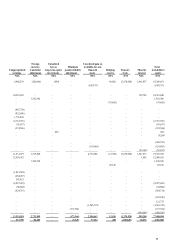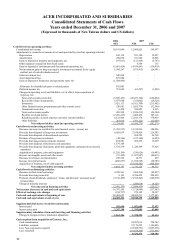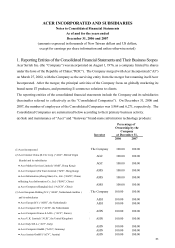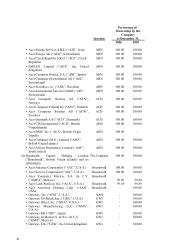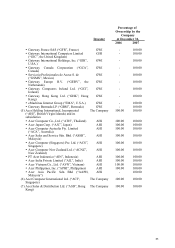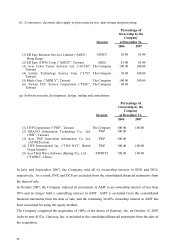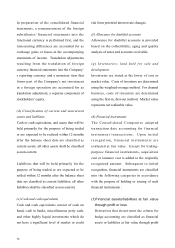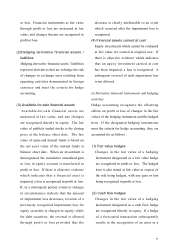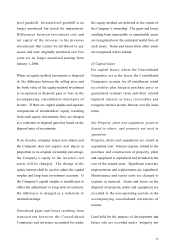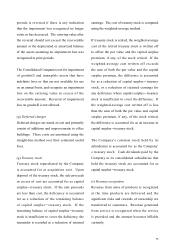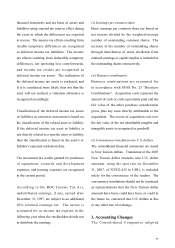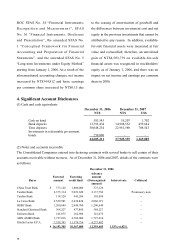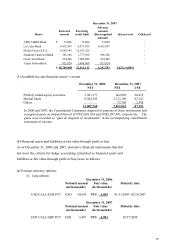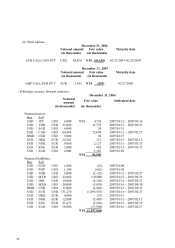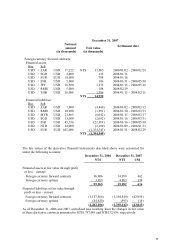Acer 2007 Annual Report Download - page 74
Download and view the complete annual report
Please find page 74 of the 2007 Acer annual report below. You can navigate through the pages in the report by either clicking on the pages listed below, or by using the keyword search tool below to find specific information within the annual report.71
or loss. Financial instruments at fair value
through profit or loss are measured at fair
value, and changes therein are recognized in
prot or loss.
(2)Hedging derivative financial assets /
liabilities
Hedging derivative nancial assets / liabilities
represent derivatives that are to hedge the risk
of changes in exchange rates resulting from
operating activities denominated in foreign
currency and meet the criteria for hedge
accounting.
(3) Available-for-sale nancial assets
Available-for-sale financial assets are
measured at fair value, and any changes
are recognized directly in equity. The fair
value of publicly traded stocks is the closing
price at the balance sheet date. The fair
value of open-end mutual funds is based on
the net asset value of the mutual funds at
balance sheet date. When an investment is
derecognized, the cumulative unrealized gain
or loss in equity account is transferred to
profit or loss. If there is objective evidence
which indicates that a financial asset is
impaired, a loss is recognized in prot or loss.
If, in a subsequent period, events or changes
in circumstances indicate that the amount
of impairment loss decreases, reversal of a
previously recognized impairment loss for
equity securities is charged to equity; while
for debt securities, the reversal is allowed
through profit or loss provided that the
decrease is clearly attributable to an event
which occurred after the impairment loss is
recognized.
(4) Financial assets carried at cost
Equity investments which cannot be evaluated
at fair value are carried at original cost. If
there is objective evidence which indicates
that an equity investment carried at cost
has been impaired, a loss is recognized. A
subsequent reversal of such impairment loss
is not allowed.
(i) Derivative nancial instruments and hedging
activities
Hedge accounting recognizes the offsetting
effects on profit or loss of changes in the fair
values of the hedging instrument and the hedged
item. If the designated hedging instruments
meet the criteria for hedge accounting, they are
accounted for as follows :
(1) Fair value hedges
Changes in the fair value of a hedging
instrument designated as a fair value hedge
are recognized in prot or loss. The hedged
item is also stated at fair value in respect of
the risk being hedged, with any gain or loss
being recognized in prot or loss.
(2) Cash ow hedges
Changes in the fair value of a hedging
instrument designated as a cash flow hedge
are recognized directly in equity. If a hedge
of a forecasted transaction subsequently
results in the recognition of an asset or a


